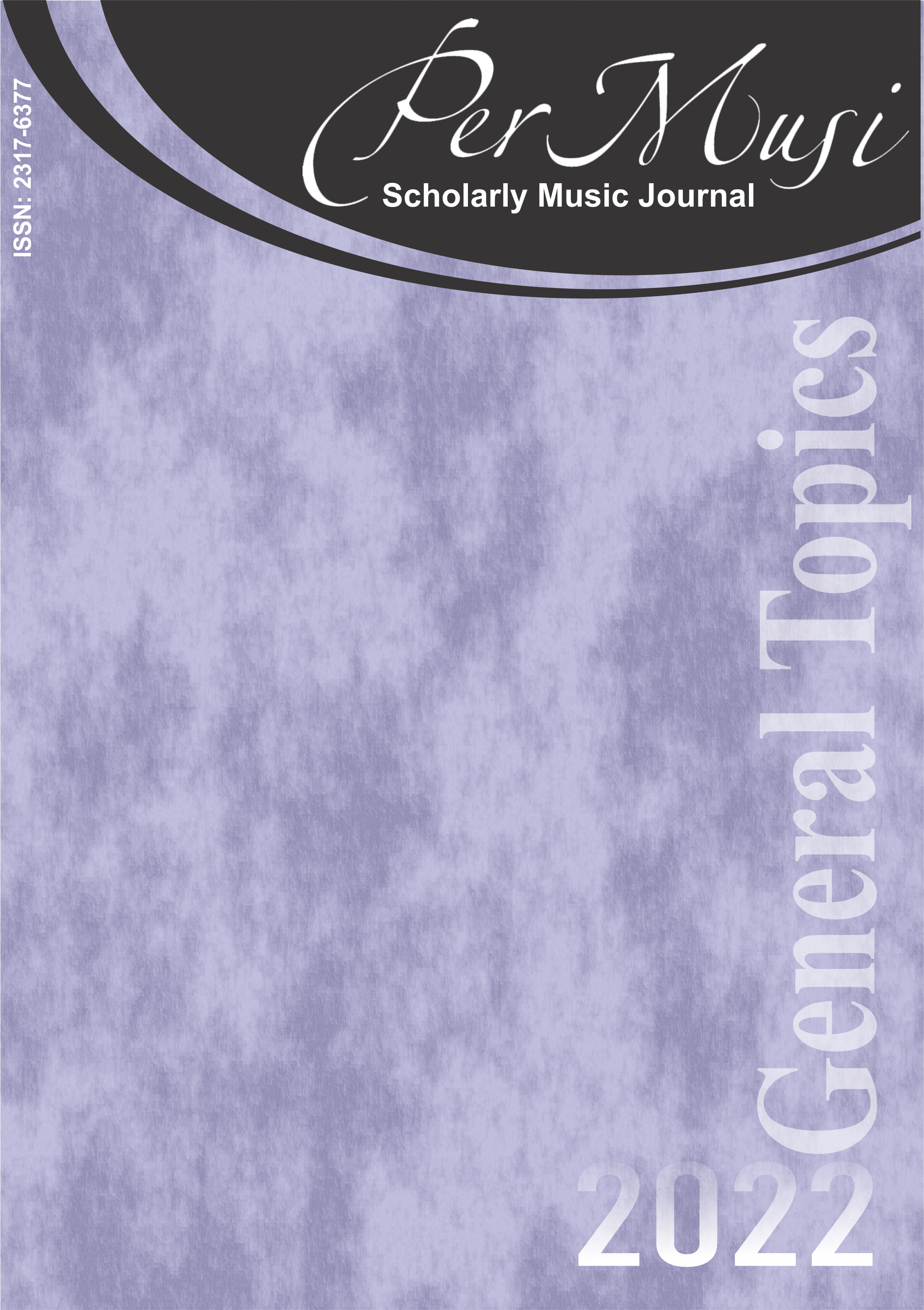Tempo Musical em November Steps, de Tōru Takemitsu
DOI:
https://doi.org/10.35699/2317-6377.2022.40417Palavras-chave:
November Steps, Takemitsu, Música Nova japonesa, instrumentos tradicionais japoneses, tempo musicalResumo
Este artigo oferece uma análise formal da composição November Steps de Tōru Takemitsu e discute as afirmações do compositor de que a peça tem onze variações (que ele chama de “Steps”) e de equivale à forma ocidental Tema com Variações, e a uma forma tradicional japonesa chamada danmono. Há uma discrepância entre essas afirmações e a organização temporal da música. Não muito foi escrito sobre November Steps, e os musicólogos que o fizeram evitaram a “tarefa desconcertante” de verificar o que é verdade sobre eles e o que não é. Portanto, o objetivo deste artigo é desvendar os mistérios sobre a forma de November Steps, que aqui é amplamente considerada como tempo musical. A obra apresenta uma concepção única de temporalidade musical, que é identificada aqui como circular, em um nível, e cíclica, em outro. O artigo explica a noção de circularidade aplicada ao tempo musical e também discute a relação entre essa obra específica e os conceitos de tempo tradicionais japonês e ocidental que se refletem na música.
Referências
Adriaansz, Willem. The Kumiuta and Danmono Traditions of Japanese Koto Music. Los Angeles, CA: University of California Press, 1973.
Bosseur, Jean-Yves. 2005. “Toru Takemitsu November Steps – oppositions et complémentarités de traditions”. Pp. 145-151
Burt, Peter. 2001. The Music of Tōru Takemitsu. Cambridge: Cambridge University Press.
Kato, Shuichi. 2007. Tempo e Espaço na Cultura Japonesa. São Paulo: Editora Estação Liberdade Ltda.
Kramer, Johnathan. 1988. The Time of Music. New York (N.Y.): Schirmer Books.
Leichtentritt, Hugo. 1951. Musical Form. Cambridge, MS: Harvard University Press.
Malm, William P. 1959. Japanese Music and Musical Instruments. Rutland, VT: Charles E. Tuttle Company.
__________. https://www.britannica.com/art/Japanese-music/Traditional-styles. Accessed on 02/07/2022.
Mertens, Wim. 1983. American Minimal Music. London: Kahn & Averill.
Randel, Don M. (editor). 1986. The New Harvard Dictionary of Music. Cambridge, MS: The Belknap Press of Harvard University Press.
Sakamoto, Haruyo. 2003. Tōru Takemitsu: The roots of his creation. Doctoral Treatise from Florida State University Libraries.
Schoenberg, Arnold. 1967. Fundamentals of Music Composition. London: Faber and Faber.
Takemitsu, Tōru. 1995. Confronting Silence. Selected Writings. Lanham, Maryland: The Scarecrow Press.
Tsukitani, Tsuneko. 2016. “The shakuhachi and its music”. In The Ashgate Research Companion to Japanese Music, edited by Alison McQueen Tokita and David W. Hughes, 145-168. London: Routledge
Wason, Robert W. 1987. “Webern’s Variations for piano op. 27: musical structure and the performance score”. Intégral Vol. I, Intégral 1987: 57-103. http://www.jstor.org/stable/40213898
Downloads
Publicado
Edição
Seção
Licença
Copyright (c) 2022 Per Musi

Este trabalho está licenciado sob uma licença Creative Commons Attribution 4.0 International License.

Exceto onde está indicado, o conteúdo neste site está sob uma Licença Creative Commons - Atribuição 4.0 Internacional.












